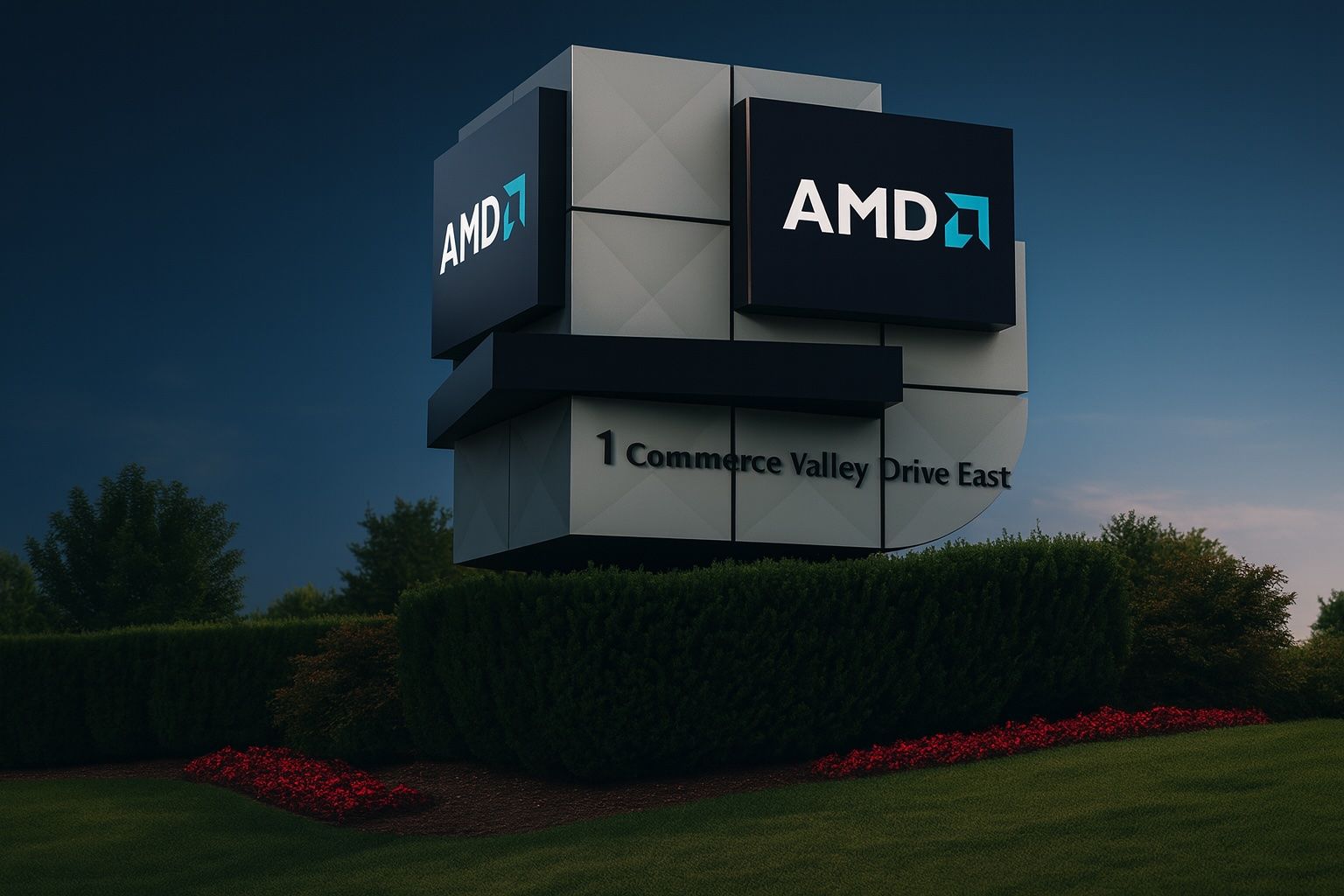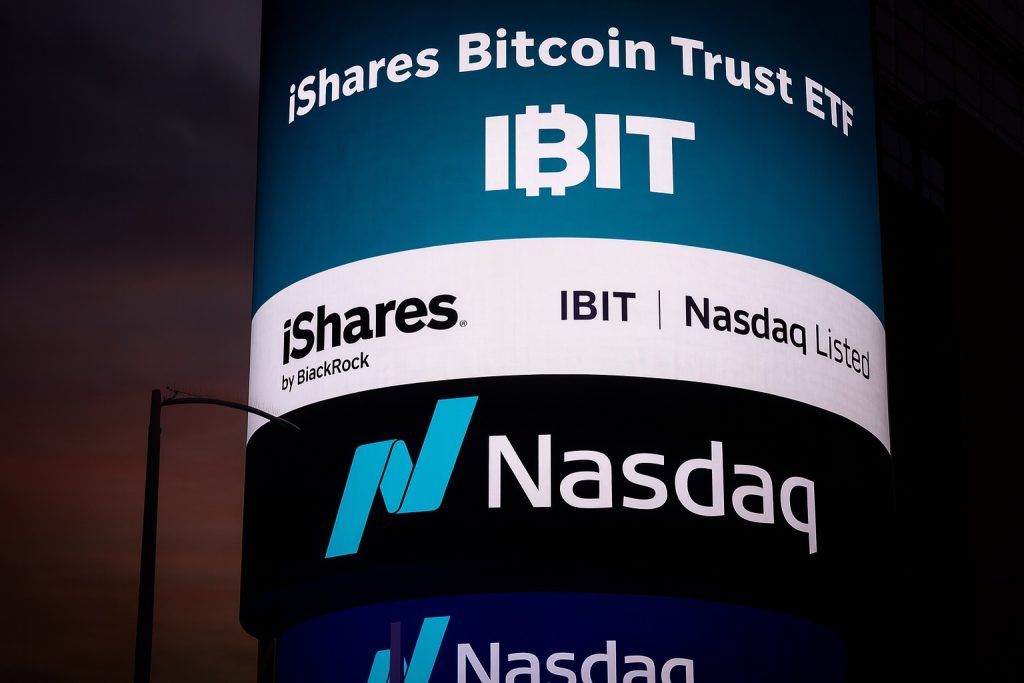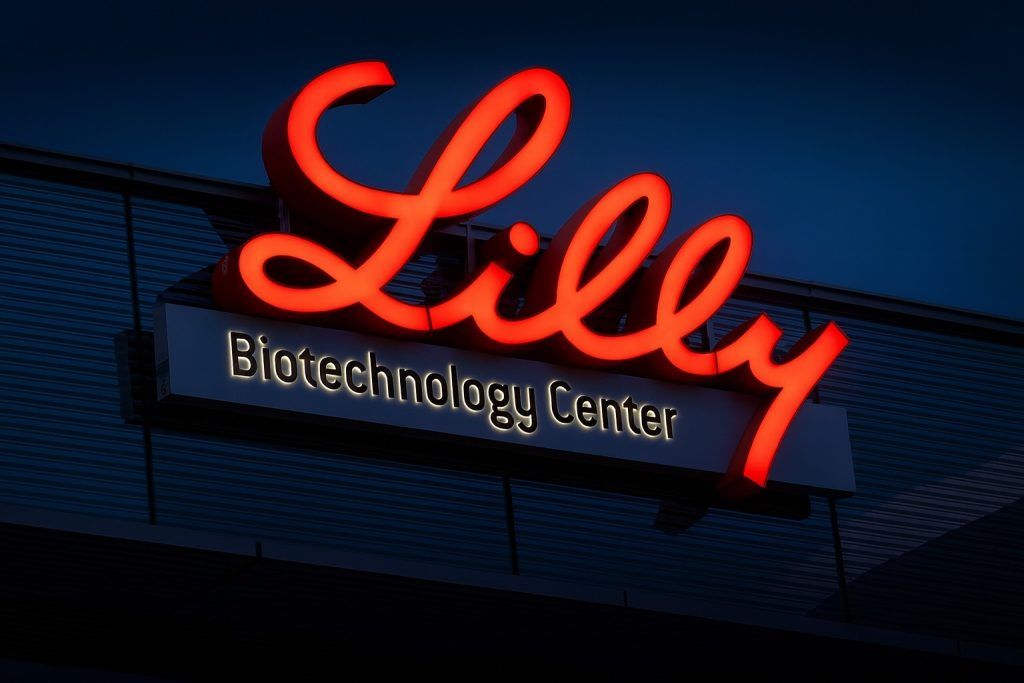- Stock Soars in 2025: AMD shares closed around $164.67 as of October 6, 2025, valuing the company near $267 billion [1]. The stock is up roughly 30% year-to-date, rebounding from a 2024 dip and not far below its mid-2025 peak of ~$186 [2]. AMD has outperformed the broader semiconductor index this year amid intense AI hype [3].
- OpenAI Partnership: In a blockbuster announcement on Oct 6, AMD unveiled a multi-year deal to supply hundreds of thousands of AI chips to ChatGPT-maker OpenAI. The agreement could bring AMD tens of billions in annual revenue, and grants OpenAI warrants to buy up to ~10% of AMD’s stock at a nominal price [4] [5]. AMD’s EVP Forrest Norrod called the deal “transformative … for the dynamics of the industry” [6].
- AI Arms Race: AMD is aggressively launching new data-center chips to challenge Nvidia’s dominance. CEO Lisa Su in June unveiled the upcoming MI300X and MI400 series AI accelerators and “Helios” supercomputing platform – aiming to compete with Nvidia’s top-tier GPUs by 2026 [7] [8]. Major players like OpenAI, Meta, Oracle and others are already testing or deploying AMD’s latest MI300X chips for AI workloads [9].
- Rivalry & Partnerships: Nvidia remains the unquestioned leader in AI chips (≈94% market share in GPUs [10], ~$4 trillion market cap [11]). But AMD is gaining ground: it’s stealing CPU market share from Intel and pitching itself as a viable second source for AI accelerators [12] [13]. In an unusual twist, Intel – long AMD’s arch-rival – is in talks to produce chips for AMD via its foundry business, reflecting shifting alliances amid surging chip demand [14].
- Wall Street’s Take: Analyst sentiment is broadly positive but split on valuation. Bulls tout AMD’s AI and server growth – e.g. HSBC raised its target to $200, forecasting a “big reversal” with >$8 billion in AI revenue this year [15] [16]. Multiple firms have hiked price targets (UBS to $210; Northland to $198) on AMD’s prospects [17]. Bears, however, warn the stock (at ~94× earnings [18]) is “overvalued” without flawless execution, noting Nvidia still dominates AI and AMD’s margins are thinner [19].
- Media & Public Buzz: AMD’s comeback under CEO Dr. Lisa Su is drawing mainstream praise. Once near bankruptcy, the company’s value has exploded from under $2 billion in 2012 to ~$270 billion today [20] [21]. Tech media and Yahoo Finance regularly flag AMD as a “trending” ticker amid the AI frenzy [22]. Enthusiastic investors have piled into chip stocks on any positive AI headline – a “FOMO”-driven rally that analysts say is pushing valuations to extremes [23]. Still, coverage notes AMD’s status as the scrappy underdog-turned-contender in a sector long dominated by giants.
Stock Performance & Market Valuation
Advanced Micro Devices (AMD) has been one of 2025’s semiconductor standouts. The stock trades around $164–$165 per share as of October 6, reflecting a dramatic rise this year [24]. At a ~$267 billion market capitalization [25], AMD is now the world’s third-most valuable chip maker – still a fraction of Nvidia’s size, but a testament to how far it has come. Shares have climbed roughly 30% year-to-date [26], handily beating the broader market and even the Philly chip index, amid investor excitement over artificial intelligence. In fact, AMD’s stock already blew past Wall Street’s average price target (~$152) earlier in the year [27]. It hit a 52-week high near $186 in mid-2025 before pulling back [28], suggesting investors priced in a lot of good news over the summer.
This rally follows a volatile 2024 in which AMD’s stock slumped by 18% [29]. The 2025 resurgence has been fueled by booming demand for high-performance chips and a series of strategic wins (from product launches to partnership deals). AMD’s valuation is not cheap: even after the recent dip from its highs, the stock trades around 56× forward earnings and an even loftier ~94× trailing P/E [30]. That rich valuation reflects optimism for future growth – but also leaves little room for error. By comparison, Nvidia’s P/E near 50× looks modest next to AMD’s, due to Nvidia’s much larger current profits [31]. In short, investors are giving AMD a growth-stock premium, betting it can significantly scale its earnings in the coming years. Whether AMD can meet these high expectations is the central question looming over its stock.
OpenAI Partnership: Transformative AI Deal
On October 6, AMD announced a landmark partnership with OpenAI, marking one of the most significant deals in its history. AMD will supply OpenAI – the creator of ChatGPT – with hundreds of thousands of cutting-edge AI processing chips over multiple years [32] [33]. The first deployments will use AMD’s forthcoming Instinct MI450 accelerators, starting in the second half of 2026 [34]. In total, OpenAI plans to build out 6 gigawatts of AI compute using AMD hardware, including an initial 1 GW data center entirely on MI450 GPUs [35] [36]. For AMD, this is a blockbuster order that executives expect will generate “tens of billions of dollars” in revenue per year once ramped [37]. They forecast over $100 billion in new revenue across four years from OpenAI and follow-on customers, given the deal’s halo effect [38]. To put that in perspective, AMD’s total revenue last year was under $25 billion – so the OpenAI deal could quadruple its business in the coming years if all goes to plan.
The agreement has an eye-popping equity sweetener as well. AMD granted OpenAI a warrant to purchase up to 160 million AMD shares (approximately 10% of the company) at just $0.01 each [39] [40]. These shares vest in tranches as milestones are hit – both in terms of OpenAI deploying the chips and AMD’s stock price performance. The final tranche requires AMD’s stock to soar to $600 per share [41], an ambitious target nearly four times the current price. In essence, OpenAI gains a significant stake in AMD if it helps catapult AMD into the AI big leagues. “We view this deal as certainly transformative, not just for AMD, but for the dynamics of the industry,” AMD’s data center chief Forrest Norrod told Reuters [42]. It’s a powerful endorsement of AMD’s technology from one of AI’s most coveted customers – and a direct challenge to Nvidia’s supremacy in the AI arena.
OpenAI CEO Sam Altman hailed the partnership as “a major step in building the compute capacity needed to realize AI’s full potential,” saying AMD’s high-performance chips will “accelerate progress” in AI for everyone [43] [44]. The deal signals that OpenAI (which was recently valued at a stunning $500 billion in a private share sale [45]) is diversifying its hardware suppliers beyond Nvidia. In September, Nvidia itself struck a $100 billion arrangement to continue supplying OpenAI with systems (including future “Vera Rubin” GPUs in 2026) [46]. But OpenAI’s move to also embrace AMD shows insatiable demand for AI chips – and a desire not to rely on any single vendor. For AMD, winning OpenAI’s confidence is a pivotal breakthrough. It not only guarantees a massive revenue stream (starting in 2026) but also instantly bolsters AMD’s credibility in AI. “This partnership brings the best of AMD and OpenAI together… enabling the world’s most ambitious AI buildout,” said CEO Lisa Su [47]. AMD’s finance chief added that the deal is expected to be highly accretive to earnings and shareholder value [48].
Market reaction: News of the OpenAI pact sent ripples through the market. Investors cheered the development as a potential game-changer for AMD’s AI ambitions. In early trading, AMD’s stock jumped ~3% while rival Nvidia dipped, according to market observers. The enthusiasm was especially sharp given that just days earlier, sentiment had swung negative on reports OpenAI might develop its own chips with Broadcom – news that briefly knocked AMD’s stock down ~5.5% last week [49]. Securing a flagship customer like OpenAI on a long-term deal flips that narrative overnight. It positions AMD as a truly credible contender to supply the next wave of AI infrastructure. As one analyst told Yahoo Finance, “OpenAI’s valuation surge and partnerships have been lifting all AI chip stocks” – and now AMD has one of the premier seats at the table [50] [51]. The challenge ahead will be executing: AMD must deliver these advanced GPUs on time (starting 2026) and prove they can compete head-to-head with Nvidia’s best. But for now, the OpenAI deal stands out as validation of AMD’s strategy to double down on data center and AI products.
Other Recent Developments and Strategic Moves
AMD’s OpenAI win caps a flurry of strategic moves in recent weeks aimed at expanding its foothold in AI and enterprise computing. In late September, AMD expanded its partnership with Cohere, an enterprise AI startup specializing in large language models. Under that deal, Cohere’s AI models (for example, its Command series and North platform) will run on AMD’s Instinct GPU cloud infrastructure, giving Cohere’s customers more choice beyond Nvidia hardware [52] [53]. AMD even plans to integrate Cohere’s technology internally for its own AI workloads [54]. The Cohere collaboration underscores AMD’s push into the enterprise AI market – providing secure, cost-effective AI solutions for businesses and governments. “AMD has a compelling [total-cost-of-ownership] proposition with its AI infrastructure,” said Cohere co-founder Nick Frosst, noting that AMD’s AI platform offers efficiency and an alternative for “sovereign” AI projects that require data control [55]. This aligns with AMD’s messaging that its open, standards-based approach (using Ethernet networking and x86 compatibility) can appeal to customers wary of proprietary systems [56].
Another eyebrow-raising development: Intel and AMD in talks about a manufacturing partnership. On October 1, Reuters reported that Intel is in early discussions to add AMD as a foundry customer, per sources cited by Semafor [57]. In plain terms, Intel – which has long built only its own chips – may start producing chips for AMD in the future. AMD has been fabless for years (relying on TSMC to manufacture its processors), but exploding demand for advanced chips has AMD exploring all options to secure capacity [58]. Intel is investing heavily to become a leading contract chip manufacturer (as part of its turnaround plan), so landing AMD’s business would be a huge vote of confidence in Intel’s nascent foundry capabilities. Neither company has confirmed details, but it’s a remarkable possible alliance given their decades of bitter rivalry. It also highlights how supply chain dynamics are shifting: the race to build AI hardware is so intense that even arch-competitors might cooperate to boost output. AMD evaluating Intel’s process technology [59] suggests that if Intel’s fabs can meet AMD’s needs (on cost and tech parity with TSMC), AMD is open to a deal. This would diversify AMD’s supply base – important as cutting-edge fab capacity grows ever more precious amid the AI boom.
In terms of corporate events, AMD is gearing up to report its third-quarter 2025 financial results on Nov. 4 [60]. Investors will be watching for updates on data center chip sales and any early commentary on AI order backlogs. In the prior quarter (Q2 2025), AMD delivered strong numbers – revenue climbed 32% year-on-year [61] – driven by heavy demand for server processors and initial AI accelerator shipments. The company has been riding momentum in its core businesses (PC and server CPUs, where it continues to take share from Intel) and is now starting to see a contribution from AI silicon. AMD’s own projections (prior to the OpenAI deal) were for accelerating growth in the second half of 2025, and analysts forecast full-year revenue around $32.8 billion [62] (up from $23.6B in 2024). With the new OpenAI agreement, any forward guidance or comments from AMD’s management could turn even more bullish – though the bulk of that specific deal’s revenue won’t materialize until 2026 and beyond. In the meantime, AMD’s R&D and capital investments remain high as it prepares new product launches. The company recently closed a $1.9 billion acquisition of network processor firm Pensando and completed its integration of FPGA-maker Xilinx, bolstering its data center portfolio. It also quietly acquired several AI software startups (and hired their talent) in 2025 to strengthen its machine learning software stack (ROCm) and help developers more easily adopt AMD GPUs [63]. All these moves point to AMD doubling down on data center and AI – even at the expense of near-term margins – to catch up to its larger rivals.
Financial Results and Outlook
AMD’s financial performance so far in 2025 has been robust, reflecting the same AI-fueled tide lifting the entire chip sector. In Q1, AMD’s revenue jumped 36% year-over-year to $7.4 billion [64], and in Q2 it rose about 32% YoY [65] – a sharp rebound after a sluggish 2024. The brightest spot has been the Data Center segment, which in Q1 saw a 57% surge driven by EPYC server processors and early sales of Instinct accelerators [66]. High-end server chip demand from cloud giants and enterprises remains red-hot as AI workloads scale up. AMD’s client PC segment also returned to growth (28% uptick in Q1 [67]) thanks to new Ryzen processors and a stabilization in the PC market. The only soft patch was the embedded segment (down slightly), but overall the company’s diversified portfolio is firing on multiple cylinders.
Crucially, AMD’s margins have faced some pressure due to heavy investments in new product development and inventory buildup for AI chips. The company is prioritizing growth over short-term profit, which is understandable given the stakes. CFO Jean Hu noted that the OpenAI partnership, for example, will be “highly accretive” to earnings in the long run [68], but ramping up production of advanced GPUs will entail upfront costs. Wall Street analysts expect AMD’s earnings per share to improve in 2025 versus last year, but not as dramatically as revenue – reflecting those investments and intense competition on pricing (especially from Intel in the CPU space). As of now, consensus estimates peg AMD’s full-year 2025 sales around $32–33 billion [69] and project double-digit percentage growth again in 2026 as the OpenAI deal and other wins kick in. Investors will be listening on the Q3 earnings call for any updates on AI chip supply constraints, gross margin trends, and early 2026 outlook in light of recent deals.
One factor to watch is the broader economy and tech spending environment. Concerns about rising interest rates and geopolitics (e.g. U.S.–China tech export restrictions) have introduced some volatility in chip stocks. AMD’s CEO Lisa Su has stated that, despite stricter U.S. export curbs on advanced AI chips to China, the company still expects “strong double-digit growth” from its AI business, as demand in other regions more than offsets any lost China sales [70]. How AMD navigates those export rules (which primarily affect its MI250/300 series for China) will be important. Additionally, with the global PC market expected to only modestly grow, AMD’s data center and embedded segments carry the growth torch. The company’s ability to continue out-innovating Intel in CPUs and seize a meaningful slice of Nvidia’s AI accelerator market will determine its financial trajectory. If execution stays on track, AMD’s outlook appears bright; any stumble or product delay, however, could temper the high expectations built into its stock price.
Competitive Position: AMD vs. Nvidia and Intel
AMD finds itself in a fierce three-way battle with semiconductor heavyweights. Its longtime competitor Intel is fighting to regain technological leadership, while Nvidia has become the de facto king of AI chips. AMD is carving out a strong position in CPUs and a nascent but growing foothold in AI accelerators, effectively playing challenger to both rivals on different fronts.
Against Nvidia (AI & GPUs): In the arena of artificial intelligence and graphics processors, Nvidia is still far ahead. Nvidia commands about 94% of the GPU market (by some estimates) [71] and has ridden the AI wave to record financial heights – recently attaining an almost $4 trillion market capitalization, briefly the world’s highest [72]. Its latest H100 and upcoming next-gen chips remain the gold standard for training large AI models. However, AMD is no longer absent from the conversation. The company’s Instinct MI300X GPUs, launched in 2023, are now deployed with major cloud players like Microsoft, Meta, Oracle, and Dell [73]. In certain inference tasks (running trained AI models), AMD’s MI300X has even been shown to beat Nvidia’s H100 in performance [74]. AMD has smartly positioned itself as an open alternative to Nvidia’s closed ecosystem. Its ROCm software stack is open-source, and its coming “Helios” systems will use standard Ethernet connections – a contrast to Nvidia’s proprietary NVLink interconnects [75] [76]. This openness could appeal to customers wary of vendor lock-in or looking to mix and match AI hardware [77]. “The future of AI is not going to be built by any one company or in a closed ecosystem,” Lisa Su declared in a jab at Nvidia’s approach [78]. To back that up, AMD is set to launch the MI400 series in 2026, aiming to roughly match Nvidia’s next-gen chips in performance [79]. It’s also designing full server racks (Helios) with 72 AMD GPUs bundled, akin to Nvidia’s ultra-dense AI superpods [80]. While AMD remains a distant #2 in AI accelerators, these moves have started to make a dent – enough that AI leaders like OpenAI are willing to bet on AMD. Analysts say Nvidia’s lead is secure for now, but the sheer pace of AI growth means there’s room for a second supplier. If AMD can execute on its roadmaps (and leverage partnerships like OpenAI), it could graduate from a mere “second source” to a true alternative leader in AI chips [81].
Against Intel (CPUs & Manufacturing): On the CPU side, AMD has been steadily chipping away at Intel’s dominance in PCs and servers. Its Ryzen desktop processors and EPYC server chips, built on advanced TSMC nodes, have often outperformed Intel’s offerings on efficiency and multi-core performance. This has translated into market share gains each quarter [82], especially in the lucrative server CPU market where AMD’s share is now estimated well above 25%. Intel, however, isn’t standing still. Under CEO Pat Gelsinger, Intel received a massive boost – including a ~$9 billion U.S. government stake (for ~10% of the company) as part of the CHIPS Act [83], and even a surprise $5 billion investment from Nvidia in September [84]. These votes of confidence have helped Intel stock rally and have funded Intel’s push to catch up in chip manufacturing technology. Intel’s roadmap aims to reclaim process leadership by 2025-2026 and launch new CPUs (like Panther Lake on 18A process) that could narrow the gap with AMD. For now, AMD continues to enjoy a performance edge in many segments, but it’s cognizant that Intel is a “wildcard” – a resurgent Intel could slow AMD’s momentum [85]. Interestingly, AMD might also benefit from Intel’s turnaround: if Intel’s foundry arm succeeds, AMD as a customer could gain a second source of chips beyond Taiwan’s TSMC [86]. The very idea of Intel making chips for AMD underscores how the industry landscape is shifting from simple rivalries to complex coopetition. Both companies also face a common foe in Apple, which now designs its own ARM-based M-series chips, and emerging competition from AI-focused startups designing custom silicon.
In summary, AMD’s competitive positioning is that of a nimble contender flanked by two giants. “[It’s] Nvidia’s world, with everybody else paying rent,” one tech analyst quipped of the current AI chip landscape [87]. But many agree AMD is a nimble rival poised to capitalize on opportunities the leader leaves open [88]. In CPUs, AMD has already proven it can beat Intel on innovation when given the chance. In GPUs for AI, AMD is leveraging an open strategy and strategic partnerships to punch above its weight. The next 1–2 years will be critical: Nvidia’s and Intel’s moves are somewhat entwined (with Nvidia even collaborating with Intel), while AMD must execute largely on its own. If AMD’s bets pay off, it could emerge as a more equal three-way competitor; if not, it risks remaining the distant second or third player in the markets that matter most.
Wall Street’s View: Bulls vs. Bears
The Bull Case: Many analysts and investors see AMD as a prime beneficiary of the AI revolution and the continued shift away from Intel’s dominance. Optimism abounds that AMD’s growth spurt is just beginning. Case in point: HSBC analyst Frank Lee in July raised his AMD price target to $200 and upgraded the stock to a Buy, citing far brighter prospects for AMD’s AI business than earlier expected [89]. Lee noted on CNBC that feedback on AMD’s newest AI chips had improved markedly – “the MI355[X], the feedback’s been a lot more positive” – and that cloud “hyperscalers” were showing real interest [90]. He projected a “big reversal” in AMD’s AI revenue trajectory, now forecasting >$8 billion in AI-related sales for 2025, versus consensus estimates around $6 billion [91]. In his view, AMD’s AI opportunity is accelerating as the company refines its hardware and software and wins marquee clients. Other bulls argue that the market underestimates AMD’s data center strength beyond just AI. AMD’s EPYC server CPU revenues have been climbing fast, and its Xilinx-derived FPGA and adaptive chip business opens additional avenues (5G, embedded, etc.). “Stop comparing AMD’s chips with Nvidia’s and look at its data-center growth,” one bullish commentary urged [92], pointing out that AMD’s portfolio (CPUs + GPUs) gives it multiple engines for growth. Wall Street has been lifting targets accordingly: UBS recently reiterated a Buy and raised its 12-month target from $150 to $210, citing strong PC and server chip demand alongside AI traction [93] [94]. Northland Capital likewise bumped its target to $198 (from $132) after AMD’s summer AI updates [95]. As a result, AMD carries a consensus recommendation of “Moderate/Strong Buy,” with around 28 out of 44 analysts rating it a buy and only a handful advising hold or sell [96]. The highest Street price target sits at $223 [97], implying confidence by some that AMD’s market value can continue climbing as AI and high-performance computing demand explodes. In short, the bull case is that AMD will leverage its technological gains and partnerships to capture a much larger slice of a growing pie – spanning CPUs, GPUs, and adaptive chips – and thus its current valuation will be justified (or even low) once earnings catch up to the opportunity.
The Bear Case: Skeptics, however, urge caution, pointing to risks that the hype may be ahead of reality. A recent Seeking Alpha analysis bluntly rated AMD a Sell, arguing that after the sharp rally, the stock’s upside is limited from here [98]. The bears’ core concern: AMD’s valuation has grown rich relative to its near-term earnings power. Even with growth, a ~90× earnings multiple (and ~56× forward) demands exceptional performance to deliver further stock appreciation [99]. Any stumble – a delayed product, a lost design win, or an macroeconomic slowdown – could trigger a significant pullback. Moreover, AMD faces ferocious competition in its new high-growth areas. Nvidia’s entrenched lead in AI chips (and software CUDA dominance) won’t be easy to overcome; one quarter’s strong GPU sales for AMD doesn’t guarantee a trend. Some analysts also note that profit margins on data center GPUs might be thinner as AMD undercuts Nvidia on price to win deals, which could weigh on earnings. Intel, for all its recent struggles, still commands over 70% of PC and server CPU share and has vast resources – if its turnaround gains steam by 2026, AMD could find its window of easy share gains closing. There are also macro risks: global chip demand, especially for consumer electronics, has cyclical elements, and a lot of AI chip demand today is driven by exuberance around generative AI models that are still costly to run – if that “AI fever” cools, orders could slow. Some on Wall Street advise that AMD’s stock already reflects a rosy scenario. Goldman Sachs, for example, has a Neutral rating and a relatively low ~$140 target on AMD, citing uncertainty in how much of the AI spend will actually shift to AMD versus incumbents [100] [101]. Finally, the bear case emphasizes that AMD’s execution must be flawless. The company has many complex product launches in the next year (Zen 5 CPUs, RDNA4 GPUs, MI300/350/400 GPUs, etc.) and is taking on big projects with partners. Any technical hiccups or supply chain issues could undermine its newfound reputation. In sum, while few doubt AMD’s long-term trajectory is positive, the skeptics say the market may have priced it to perfection, leaving little margin for error in a fast-changing semiconductor landscape.
Media Coverage and Public Sentiment
In the public eye, AMD’s narrative has shifted from underdog to industry disruptor. The company and its CEO are enjoying a moment of acclaim in mainstream media. Just this week, Business Insider ran a feature on CEO Lisa Su, crediting her with “one of the most dramatic turnarounds in tech” – taking AMD from near bankruptcy in 2012 to a ~$270 billion powerhouse rivaling Intel and Nvidia in 2025 [102] [103]. Such profiles highlight Su’s strategic bets on high-performance chips and key acquisitions (like Xilinx) that revitalized AMD. The media often contrasts AMD’s rise with Intel’s stumbles and positions Su as a visionary who foresaw the heterogeneous computing trend. AMD is also getting noticed for its role in the AI boom: it’s frequently mentioned alongside Nvidia in broader stories about the “AI frenzy” driving stock markets. For instance, Yahoo Finance and others reported how OpenAI’s sky-high valuation of $500 billion and its flurry of AI projects have lifted not just Nvidia but also AMD and other chip stocks as investors seek the next big AI winner [104] [105]. AMD’s ticker has become a regular “trending” stock on retail platforms and news sites, reflecting how much buzz now surrounds the once-sleepy chipmaker [106].
Social media and tech forums similarly echo a mix of excitement and debate on AMD. Enthusiast communities give AMD kudos for giving Intel “a run for its money” in CPUs and for championing openness in GPUs against Nvidia. The brand enjoys goodwill from PC gamers (thanks to its Radeon graphics cards and the influential “Ryzen” CPUs that broke Intel’s monopoly) – a base that often roots for AMD as a plucky challenger. Now, with AI in the mix, even general audiences see AMD as part of the narrative of Big Tech’s next chapter. Public sentiment toward the semiconductor sector is admittedly running hot – talk of an AI bubble or “1990s dot-com redux” has surfaced as chip valuations balloon. Analysts have cautioned about “FOMO” (fear of missing out) driving some investors to chase AI-related stocks indiscriminately [107]. AMD, being one of the key names in AI hardware, has been swept up in this euphoria. That said, the tone of coverage around AMD specifically is largely positive but level-headed: most outlets recognize the company’s achievements under Lisa Su while noting it still operates in the shadow of a giant (Nvidia) and faces execution risks.
Notably, AMD’s recent announcements have made front-page tech news. The OpenAI deal, in particular, grabbed headlines in Reuters, Bloomberg, Yahoo Finance, Fortune, and more – framing it as a bold move that “ups the ante” in the AI chip wars. AMD is portrayed as seizing the moment to challenge a dominant player. Even outlets like Fox Business and Wall Street Journal have highlighted how unusual it is for OpenAI to align with AMD, given Nvidia’s near-lock on the AI market – a sign that Nvidia’s crown is not unassailable. Meanwhile, financial pundits on CNBC and Yahoo Finance Live have debated AMD’s valuation: some argue the stock could have more room to run if it captures meaningful AI business, while others recommend caution or profit-taking after the big run-up. The fact that AMD is a staple of such discussions shows how its profile has grown. Five years ago, AMD was rarely in mainstream headlines; today it’s considered a central player in stories about the future of computing, often mentioned in the same breath as Intel, Nvidia, and even the likes of Google and Apple when it comes to chip strategy.
Overall, the public narrative frames AMD as the comeback kid of semis – a company that, under steady leadership, transformed itself and is now positioned to play with the titans. There is a palpable sense of underdog pride among AMD’s supporters, and even neutral observers tend to cheer for continued competition (since a more competitive landscape is seen as good for innovation and customers). As 2025 draws to a close, AMD finds itself with an unusual mix of hype and hope surrounding it: hype that it might be “the next big AI stock” and hope that it can live up to that promise without stumbling.
Outlook: Challenges and Opportunities Ahead
As of October 2025, AMD stands at a critical juncture with immense opportunity in sight and formidable challenges to navigate. The company’s strategic bets – from acquiring Xilinx and Pensando, to developing the MI300/MI400 accelerators, to forging alliances with firms like OpenAI and Cohere – have all been geared toward one goal: establishing AMD as a leader in the data-centric, AI-driven era of computing. The next year will test how well those bets pay off. In the near term, a lot is riding on the successful launch of AMD’s new products. The Zen 5 architecture for CPUs (expected to power next-gen Ryzen and EPYC chips) will need to keep Intel at bay. The Instinct MI300X and MI350/MI400 GPU line must prove their worth in real-world AI deployments – delivering performance per dollar that convinces more customers to join OpenAI in AMD’s camp. If early 2026 brings tangible evidence of AMD chips enabling cutting-edge AI projects (without major hiccups), it will greatly strengthen AMD’s hand.
The competitive response will also influence AMD’s path. Nvidia is unlikely to cede ground easily; it has its own next-gen GPUs and an ever-expanding software ecosystem that locks in developers. Intel, armed with fresh capital and government support, will launch new server CPUs and perhaps accelerate its foundry offerings – both of which could pressure AMD’s growth or margins if they gain traction. Furthermore, there’s the macro backdrop: global demand for electronics and cloud services needs to stay robust to support high chip sales. Any downturn in tech spending or a bursting of the “AI hype bubble” could cool the presently torrid demand for high-end chips (and by extension, temper investor enthusiasm).
That said, AMD’s management appears acutely aware of these risks and is navigating a careful course. The company’s balance sheet is relatively healthy (debt is modest after the Xilinx deal, and cash flows from the core business are solid), giving it resilience to continue investing. CEO Lisa Su has consistently taken a long-term view, prioritizing roadmap execution and strategic customer wins over short-term market noise. This steady approach has earned her credibility – and it will be key in guiding AMD through the next phase of growth. Public expectations are high: AMD is now often mentioned as a potential “third platform” next to Intel and Nvidia for big compute workloads [108]. To solidify that status, AMD will need to demonstrate not just technical parity but also reliability and support at scale for major clients. The OpenAI deal, while transformative, also raises the bar: AMD will be under pressure to meet milestones and performance targets to allow OpenAI (and others) to capitalize on its hardware.
Looking ahead, one can envision multiple bullish scenarios for AMD: perhaps by 2027, AMD has, say, 20–30% share of the AI accelerator market (up from essentially single digits today), while maintaining ~30%+ of the server CPU market. In that case, AMD’s revenues and profits would be much higher than now, vindicating the bulls. On the flip side, in a bearish scenario, Nvidia’s next products could keep AMD relegated to niche status in AI, or Intel’s comeback could erode AMD’s CPU gains – leaving AMD growing, but not fast enough to justify current valuations. The reality will likely lie somewhere in between.
What is clear is that AMD enters late 2025 with momentum and a newfound stature in the tech world. The company has repeatedly defied the odds in recent years, and it now has a seat at the table for the industry’s most important developments (from AI supercomputing to advanced silicon manufacturing partnerships). For the public and investors, AMD’s story is one to watch closely – it encapsulates many of the themes driving markets: AI euphoria, the resurgence of industrial policy (CHIPS Act), the value of innovation, and the importance of competition. If AMD continues to execute well, it could not only reward shareholders but also ensure that the next chapter of the digital revolution isn’t written by a single player. In the words of CEO Lisa Su, “we’re at the forefront of a pivotal time for AI” [109] – and AMD is intent on being a leading protagonist in that story, as 2025 turns into 2026 and beyond.
Sources: Reuters, Yahoo Finance, TS2.tech, AMD Investor Relations, Business Insider, Insider Monkey, and other industry media [110] [111] [112] [113] [114] [115] [116] [117] [118].
References
1. www.reuters.com, 2. ts2.tech, 3. ts2.tech, 4. www.reuters.com, 5. www.reuters.com, 6. www.reuters.com, 7. www.reuters.com, 8. www.reuters.com, 9. www.insidermonkey.com, 10. ts2.tech, 11. ts2.tech, 12. ts2.tech, 13. www.insidermonkey.com, 14. www.reuters.com, 15. www.insidermonkey.com, 16. www.insidermonkey.com, 17. www.aol.com, 18. ts2.tech, 19. seekingalpha.com, 20. www.businessinsider.com, 21. www.businessinsider.com, 22. www.insidermonkey.com, 23. ts2.tech, 24. www.reuters.com, 25. www.reuters.com, 26. ts2.tech, 27. www.indexbox.io, 28. ts2.tech, 29. ts2.tech, 30. ts2.tech, 31. ts2.tech, 32. www.reuters.com, 33. www.reuters.com, 34. www.reuters.com, 35. ir.amd.com, 36. ir.amd.com, 37. www.reuters.com, 38. www.reuters.com, 39. www.reuters.com, 40. www.reuters.com, 41. www.reuters.com, 42. www.reuters.com, 43. ir.amd.com, 44. ir.amd.com, 45. www.reuters.com, 46. www.reuters.com, 47. ir.amd.com, 48. ir.amd.com, 49. seekingalpha.com, 50. finance.yahoo.com, 51. finance.yahoo.com, 52. ir.amd.com, 53. ir.amd.com, 54. ir.amd.com, 55. ir.amd.com, 56. www.insidermonkey.com, 57. www.reuters.com, 58. www.reuters.com, 59. www.reuters.com, 60. ir.amd.com, 61. ts2.tech, 62. www.reuters.com, 63. www.reuters.com, 64. www.indexbox.io, 65. ts2.tech, 66. www.indexbox.io, 67. www.indexbox.io, 68. ir.amd.com, 69. www.reuters.com, 70. www.reuters.com, 71. ts2.tech, 72. ts2.tech, 73. www.insidermonkey.com, 74. www.insidermonkey.com, 75. www.reuters.com, 76. www.insidermonkey.com, 77. www.insidermonkey.com, 78. www.reuters.com, 79. www.reuters.com, 80. www.reuters.com, 81. www.insidermonkey.com, 82. ts2.tech, 83. ts2.tech, 84. ts2.tech, 85. ts2.tech, 86. www.reuters.com, 87. ts2.tech, 88. ts2.tech, 89. www.insidermonkey.com, 90. www.insidermonkey.com, 91. www.insidermonkey.com, 92. www.insidermonkey.com, 93. www.indexbox.io, 94. www.indexbox.io, 95. www.aol.com, 96. www.indexbox.io, 97. www.indexbox.io, 98. seekingalpha.com, 99. ts2.tech, 100. www.indexbox.io, 101. www.indexbox.io, 102. www.businessinsider.com, 103. www.businessinsider.com, 104. finance.yahoo.com, 105. ts2.tech, 106. www.insidermonkey.com, 107. ts2.tech, 108. www.insidermonkey.com, 109. ir.amd.com, 110. www.reuters.com, 111. ts2.tech, 112. www.reuters.com, 113. www.reuters.com, 114. www.reuters.com, 115. www.insidermonkey.com, 116. seekingalpha.com, 117. www.businessinsider.com, 118. ts2.tech







